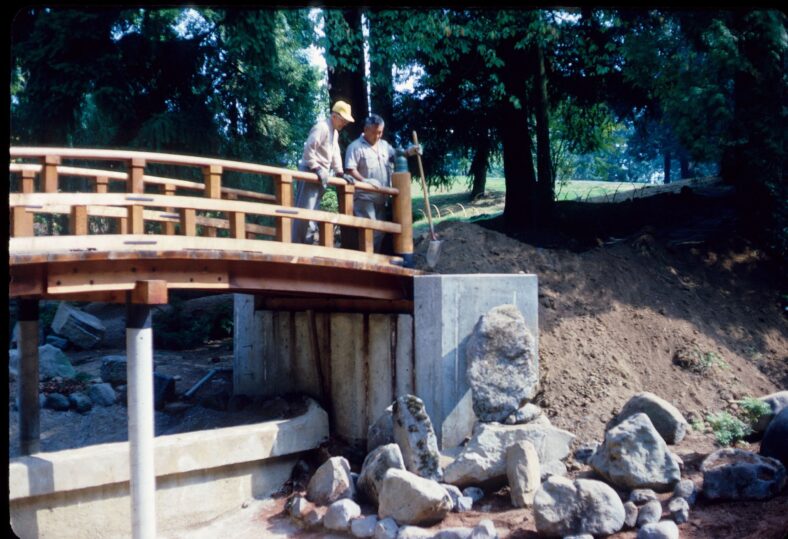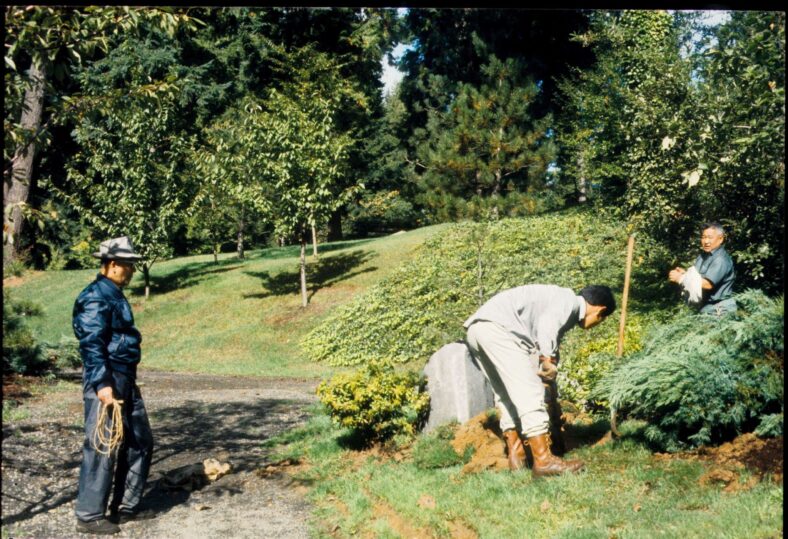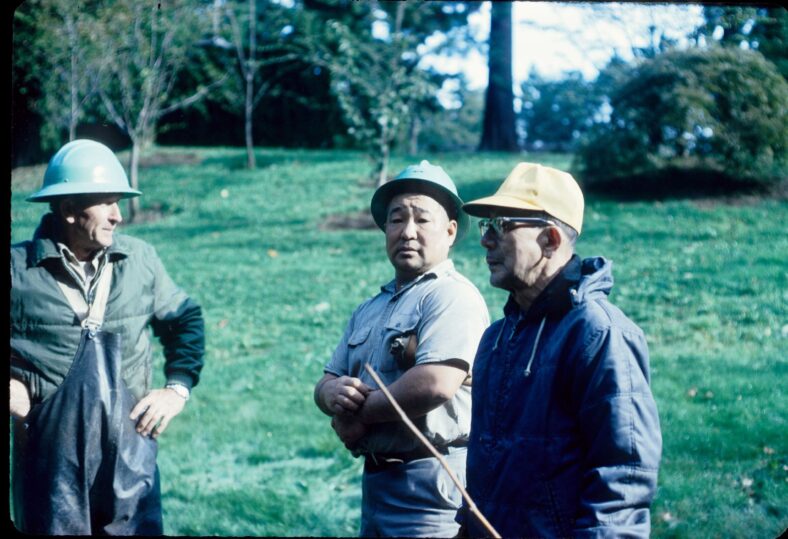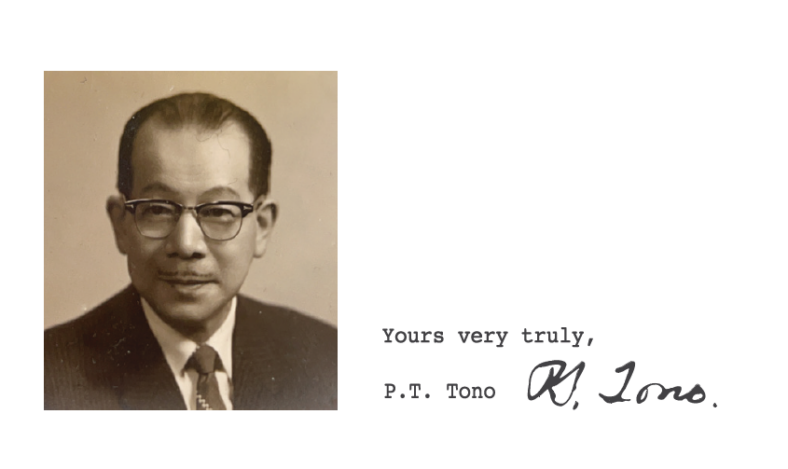
During her address to guests at Portland Japanese Garden’s 60th Anniversary Gala in Tokyo, Her Imperial Highness, Princess Takamado praised the organization, noting, “There are different Japanese gardens in [Portland Japanese Garden] and not even in Japan would you be able to see so many different types of Japanese gardens in one go…For people who want to study Japanese gardens, that’s the place to go. For people who want to feel those Japanese gardens, that’s the place to go. In Japan you would have to one garden here, another garden there, but there it’s like a museum of gardens, as far as I can see.”
The Princess was pointing out something that is quite unique to Portland Japanese Garden. When Portland Japanese Garden’s landscape was being planned, its original designer, Takuma Tono, determined that it should feature different garden styles that beckon back to different points in his native country’s history. While it was a departure from the norm, it was a brilliant decision that has helped inform millions of visitors on the nuances of Japanese garden design. That Tono would design the Garden this way comports entirely with a man who was a passionate educator.

Takuma Tono was born in Osaka, Japan in 1891. Having earned a master’s degree in agriculture from Hokkaido University in Japan and a master’s degree in landscape design from Cornell University in New York, Tono was in his 70s when he was retained by the Japanese Garden Society of Oregon to transform the old site of an abandoned zoo into the space we know today. He was already known to many garden aficionados for his work at Brooklyn Botanic Garden – his recreation there of Kyoto’s renowned Ryoanji stone garden had earned a writeup in The New Yorker. Tono was also a respected professor at Tokyo Agricultural University. By the time he connected with the Garden’s first leaders he was already an established educator to college students and interested Westerners alike. In him, we see the earliest efforts of Portland Japanese Garden to be a place of cultural diplomacy, a term that has many definitions but can generally be taken as a means of establishing peace and friendship through the mutual exchange of the arts, values, beliefs, customs, and more.
In one of his earliest pieces of correspondence with the Garden’s first leaders in 1961, Tono thoughtfully explained the four garden styles he initially conceived of for Portland (the fifth, a Moss Garden that later became the Natural Garden, would be planned further into the process in 1967). He also shared knowledge on the raked gravel garden of Ryoanji, understanding that his clients may be unfamiliar with a garden that featured no living plants other than incidental moss. “To compare the garden of Ryoanji with traditional gardens in the West would be like comparing an abstract painting with traditional art— or contemporary symphonic music with the old well-known symphonies,” his document noted. “Whatever interpretation may be given…its beauty is said to be in the eye of the perceiver; its meaning is in the soul of the viewer.”

Tono went beyond explaining the significance and meaning of different garden design—he also revealed the best sources of materials and ornaments in Japan, invaluable information in a world without internet search engines. He noted that Kyoto was the best place to acquire gravel (specifically, the Shirakawa River), tatami mats, and roof tiles. He also explained the best places at the time to find stone lanterns. “Around Kyoto is the best and Okayama and Gifu come next,” he wrote. “Aichi will be third…there are so many local ones but they are all inferior [to the aforementioned locations].”
Among Tono’s many qualities was his pragmatism. Rather than demand strict orthodoxy, he guided the Board of Trustees to make budget-conscious and maintenance-friendly decisions, such as with Portland Japanese Garden’s pathways. When the organization’s first Board President, Philip Englehart, wrote his concern that asphalt paths would deviate too far from a traditional garden design, on June 2, 1964, Tono reassured him it would be ok. “The reason [there are] gravel walks in many Japanese garden [is that was] the only material at that time… Asphalt walks may not be traditionally Japanese, but there is no harm to use there, I think.” When initial plans called for tatami mats in the Pavilion, he made the reasonable point that asking people to remove their shoes when walking inside would be a “great trouble.”

However, Tono also helped set the standard for authenticity that has garnered praise from several visiting Japanese dignitaries in the years Portland Japanese Garden has been open. This meant pushing back on ideas that would have jeopardized the organization’s perception with Japanese individuals. “There is no shrine planned for the Garden,” Tono wrote before criticizing the placement of a shrine in another Japanese garden in the U.S. “Perhaps that is ok for Americans, but it looks funny to us.” He also discouraged the installation of a statute of Buddha. “It is not customary to have a Buddha in the garden,” he wrote after having seen a statue that had been donated to the organization. “I saw the Buddha…that is very good for inside use and is very valuable. Myself, I’d rather it was not used in the garden…I’m glad that [Original Board Member Thomas Kerr] changed his mind.”
His interests in exporting the cultural gifts of Japan went beyond horticulture as well. In 1976, after most of his regular communication with the Garden had tapered off, he urged the Board to engage in more programming. Today, the organization regularly offers demonstrations of tea ceremony—it’s possible to connect that back to Tono’s encouragement. When he learned that the Tea House was not being used, he wrote to Board President Thomas Kerr, “As they say, ‘A book that remains shut is but a block.’ I know [some practitioners] who are always looking for a place to give formal lessons on tea ceremony.” Kerr wrote back to say the Garden would work on a program that would provide this cultural immersion on a regular basis.

It’s safe to say that Tono’s cultural diplomacy was met with enthusiasm in Portland. “I received your letter today, and of course, was so glad to have news of your safe arrival at your daughter’s home,” the Garden’s first Executive Secretary, Rubye Hildebrand, wrote to him in 1968. “I can imagine how glad they were to see you. Incidentally, have you any idea how sad we were to see you go? I, who am not given to tears, had a nice little ‘cry’ when I saw [Portland Japanese Garden’s first Garden Director, Kinya Hira (1964-69)] drive you away. Isn’t it strange, when one meets so many people, that you can be so affected by just one particular person?”
Most of Tono’s correspondence did not possess the more high-minded principles of cultural diplomacy. Instead, his letters back and forth with his fellow Garden leaders mostly covered practical matters, things like scheduling transpacific flights and procuring cost estimates for garden materials, sometimes even asking if they still had his work boots in storage. However, his passion for sharing the gift of an authentic Japanese garden to the unacquainted would reveal itself. “In Portland, I wish everything to be truly Japanese, authentic, and refined,” he wrote to former Board President F. Warren Munro in 1967. “Many Portlanders will get the right idea and value of Japanese culture through the medium of this Garden and its architecture,” he wrote two years earlier to Board President Thaddeus Bruno. As Portland Japanese Garden now celebrates 60 years, one can see he was right.

Note: While Professor Tono did speak and write in English, his busy schedule often prevented him from editing his letters for grammar and spelling. He once wrote, “…you may find some trouble with my words. Please use your nice imagination.” In that spirit, we have edited his writing for clarity.